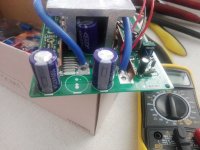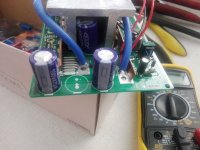Hi,
I bought a 3000W kit (72v 6500 RPM motor + 50A controller (with capacitors rated at 100V)) and a BMS 50A battery.
I am contemplating the idea of increasing the power output (amps, while keeping voltage at 72) of my battery to increase the rest of the chain already.
BUT, I want to make sure I get it properly first. The target voltage is 72V. Please correct my statements:
May someone tell me if I got the gist of it correctly?
Thanks :wink:
I bought a 3000W kit (72v 6500 RPM motor + 50A controller (with capacitors rated at 100V)) and a BMS 50A battery.
I am contemplating the idea of increasing the power output (amps, while keeping voltage at 72) of my battery to increase the rest of the chain already.
BUT, I want to make sure I get it properly first. The target voltage is 72V. Please correct my statements:
- The easiest way to do so is buying a new kit or at least matched parts.
- Upgrading the BMS from 50A to 200A will potentially decrease my Ah (autonomy) because I will be able to output more current to the controller, should it be rated high enough to feed a 8000w motor (generally 88-200A, taking peak amps into account).
- If my controller is rated at 50A, nothing will change, it will prevent any more current anyway. My 88A motor won't make its advertised power in all conditions (hills..) because I can only draw 50A anyway. It should approach its optimal perf on flat roads though.
- My driving style and hills may incur a dangerous heat increase for the battery.
- My battery may blow if the cells used are not up to the task (lack of cell quality)
May someone tell me if I got the gist of it correctly?
Thanks :wink:





